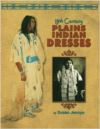Description
From ancient times North American Indians had adapted to their environment, living in settled villages, raising crops, hunting and fishing; or they were nomadic hunters and gatherers. Women raised maize, beans and squash, developed in the Americas, which had over the centuries been adapted to diverse climates and agricultural conditions and were staples of local diet. These vegetables were widely traded. Native hunters provided fresh buffalo meat, elk, deer, geese and fish. Pemmican, made from bison or salmon, was developed to preserve protein for travel and winter use. Acknowledging the critical, leading role of the Indian people in the North American fur trade, Neil Van Sickle and Evelyn Rodewald provide the true story behind the role of Native American tribes in what was arguably the most important industry in North America for three centuries. Beginning with a discussion of the general Indian culture and the development of the European fur trade in Canada and the United States, the authors create a manageable picture by framing the discussion around the year 1833, a pinnacle of fur trade activity. Described are the specific tribal influences in each area from British Hudson’s Bay to the American Old Northwest, the Great Plains from the Saskatchewan River to the Mississippi, the Rocky Mountains to the Rio Grande, and on the Pacific coast from Alaska to California as Cree, Iroquois, Chippewa, Salish, and Tlingit traders and middlemen and their ancient Indian trade routes unlocked the wilderness for European traders. In their canoes they carried the trade as well as cultural influences, westward to the Huron and on to the Great Lakes, the sub-arctic, and the headwaters of the Mississippi. On the Great Plains the use of the horses of the Sioux, Shoshoni, or Comanche expanded their trade. Native women made skin clothing, as wives of fur trappers they scraped and dried pelts, and provided diplomatic success as well as the labor and skills critical in life from the sub-arctic to the desert. The most significant and enduring fur trading systems involved the Hudson’s Bay Company, the North West Company, the American Fur Company, the Russian American Company and lesser but significant fur companies associated with the American mountain men, and a host of independent trappers and traders operating largely within Indian communities. A comprehensive examination of the development of the American fur trade has been a long time coming and Van Sickle and Rodewald accomplish an extraordinary feat by capturing it with such breathtaking panoramic vision. For too long we have relied on only one point of view and because of this, a vital part of our nation’s history has been missing. A coast to coast breakdown of the fur trade’s cultural impact, The Indian Way: Indians and the North American Fur Trade is unquestionably the most important and incisive book on the subject written to date.






Reviews
There are no reviews yet.